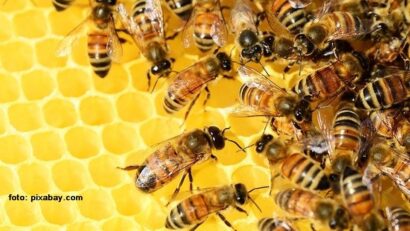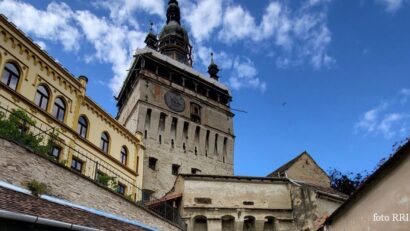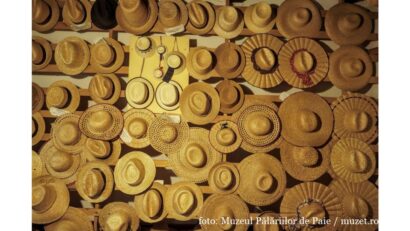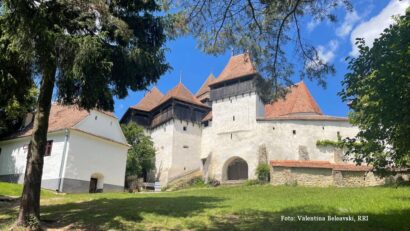Authentic Romania – 5 essential trips
Dan Dinu is the founder of the Romanian Nature Photographers' Organization. His perspective is not that of a simple visitor, but of an explorer who seeks the wild, authentic essence of the places he has been traveling through for years.
Daniel Onea, 16.10.2025, 14:00
Our journey begins in a place where the force of water meets the majesty of the mountains: the Iron Gates Natural Park. Here, at the Danube Gorges, the landscape takes on monumental proportions. The approximately 40-minute ascent to the viewpoint on Ciucarul Mare is rewarded with a breathtaking panorama.
Dan Dinu describes it as a geological wonder comparable to that of the famous Norwegian fjords: “What happens there at the Iron Gates is an absolutely magical thing. The Danube meets the Carpathians. We all know that the Danube originates in the Black Forest Mountains. But the perhaps lesser-known part is that it meets the Carpathians once more somewhere near Vienna. Here they are reunited, forming an absolutely fabulous landscape for Romania. And, at the same time, a somewhat atypical landscape for Romania. That place is almost comparable to some Norwegian fjords. It is a very spectacular point. And I think that anyone who gets there has an interesting feeling after this magical meeting between the Danube and the Carpathians.”
From the grandeur of the water, the journey moves to the stone heart of the Apuseni, in the Padiș area, a territory dominated by the most extensive karst phenomena in southeastern Europe. Here, the main attraction is the Ponor Fortress complex, a set of huge sinkholes, as if detached from another world. Photographer Dan Dinu is fascinated by the dynamics of water in this underground universe, an almost magical circuit in which springs appear and disappear, constantly shaping the rock: “The Apuseni Natural Park is interesting because it is the largest area with karst phenomena in southeastern Europe. The phenomenon is especially interesting in the area of the Ponor Fortresses. There are some huge sinkholes that were formed by the collapse of caves. They form a very interesting landscape from a karst point of view. Basically, the water in the Padiș area enters and exits the underground very, very often. This is the area of the Ponor Spring, where the water comes out. Then, it reaches the Ponor Glade, where it disappears underground. Then, it appears somewhere in the Ponor Fortresses, enters underground again and exits somewhere in the Galbenei Gorges, for example. And only by following this journey of water through the underground do we realize how fascinating nature can be. And how much it builds. Even if this effect is only visible after tens of thousands of years.”
The next stop is in the Piatra Craiului National Park, the sanctuary of Romania’s alpine symbols. Here, on the limestone ridges, you can admire the cornflower, as well as the black goat. Photographer Dan Dinu emphasizes the accessibility of this natural spectacle, recommending a route that starts from Plaiul Foii to the Marele Grohotiș area, which offers a perspective on the grandeur of the massif without requiring the technical experience of walking the ridge. The charm of the place lies in its unique fauna and flora: “Without a doubt, the easiest way, not necessarily as a tourist route, but as an access to the fascinating world of mountain ridges, is to go to the Piatra Craiului National Park. Hunting is prohibited there, being a national park. Tourists are more educated. The black goat can be seen there. The black goats come quite close to tourists, they are not scared. So, basically, we can observe their behavior. And, in addition to the cornflowers that can also be found there, we also find other rare flowers. We find the Yellow Mountain Poppy and the Piatra Craiului Carnation, a unique flower. It can only be found in this mountain massif.”
Completely changing the register, from the roughness of the rock to the delicacy of the meadows, we head towards the Transylvanian Hills. In the area of the Hârtibaci Plateau, we find a cultural area of exceptional European value. What appears to be an ordinary pastoral scene is, in fact, one of the most threatened habitats on the continent, a treasure that Romania still preserves thanks to traditional agricultural practices. The value of these places is explained at length by photographer Dan Dinu: “These meadows seem somewhat ordinary to us, because we see them relatively often in these areas and we somehow know them. But few people know that they are among the most threatened landscapes in Europe when it comes to nature, especially flora. And this is because, although they existed in the past in several countries, as villages were built, as agriculture was developed, they kind of disappeared from there. Romania still has them also because we still practice traditional agriculture in these areas. In fact, it is interesting that these meadows appeared and were maintained with human intervention. The condition is that we still mow these meadows manually or with motorized means, but very small. In this way, we allow these meadows to have this floristic diversity.”
The journey ends in an area where time seems to have stood still: a virgin forest in Maramureș, at Strâmbu-Băiuț. Romania has approximately 65% of the last virgin forests in the European Union. Here, we understand the complexity of an ecosystem: “I saw one of the most spectacular virgin forests I have encountered in Romania. There, everything shocks you in a good way. From the secular trees growing alongside young trees. From that smell of humidity, of mushrooms, of soil, to the overview you have. There you can see this very spectacular diversity between the trees. There are secular beeches, but also secular firs, which is very interesting. And everything communicates in that forest, especially through the mycelium, through the mushrooms that are in the soil. There is a very interesting saying that goes like this: dead wood, living forest. Basically, without that dead wood, you cannot have a living forest. Because dead wood is the basis for the entire food chain in a forest like this.”
Through the lens of photographer Dan Dinu, tourist Romania becomes a collection of profound experiences. From the spectacular geology of the Danube Boilers, to the mysterious hydrography of the Apuseni Mountains, from the alpine symbols of Piatra Craiului to the pastoral culture of Transylvania and to the primordial ecosystems of Maramures, each place tells an unique story. (EE)






























